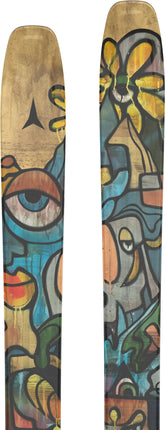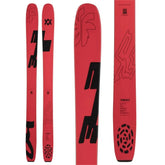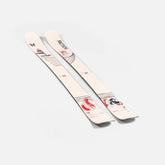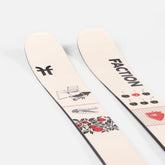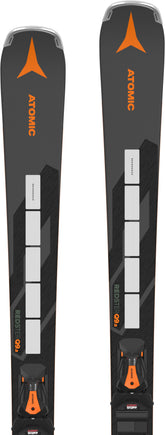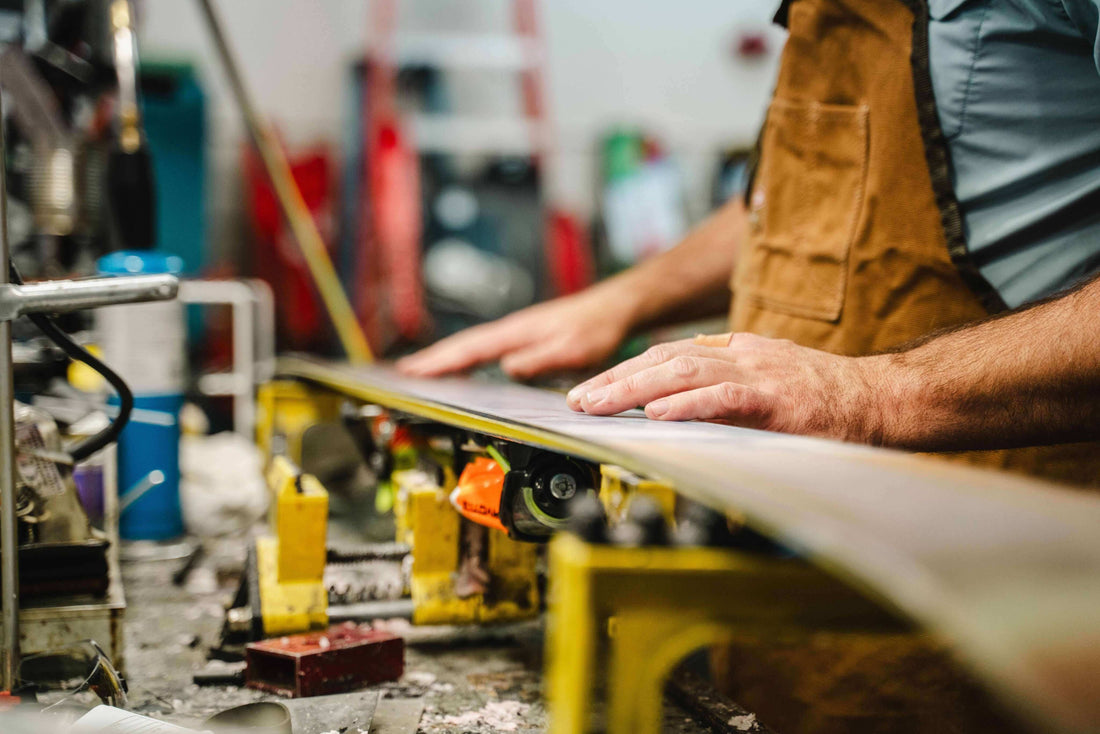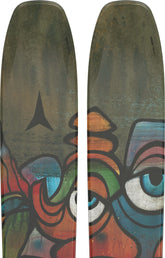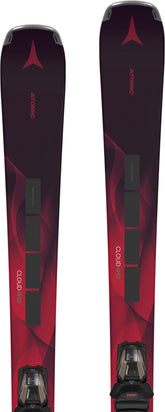If you're asking, How often should I get my skis tuned during the season?—the real answer is, it depends. There’s no one-size-fits-all rule like every five to seven days. The truth is, how often you tune your skis depends on how frequently you’re skiing, the snow conditions, and what kind of performance you expect out of your equipment.
What to Look For Before You Tune
Rather than following a rigid schedule, think about tuning as a quality check. A few signs your skis might need a tune:
-
Are your bases flat? Take a true bar or even a straight edge and check for light passing under the edges. If it’s edge high or base high, your skis aren’t running efficiently.
-
How are your edges? If they’re chipped, ragged, or dulled, they’re going to create drag and reduce control.
-
What’s the state of your base? Deep scratches, dry white patches, or inconsistent texture? That’s friction. That’s drag. That’s lost speed.
For racers, these little imperfections matter. A striation mark or slightly burred edge can cost you edge hold in a turn. Recreational skiers might not feel it right away, but over time, you’ll notice the difference in responsiveness and glide.
Not Every Tune Is the Same
Skis don’t always need a full tune. Sometimes a wax and edge will get you back to where you need to be. But if you’ve hit rocks or the bases look beat up, a full tune makes sense. The better you can recognize what your skis actually need, the longer they’ll last and the better they’ll perform.
A Word on How Shops Tune Skis
This part doesn’t get talked about enough. A lot of skiers bring their skis in, pay for a tune, and have no idea what actually happens. But how a ski is tuned can either prolong its life—or shorten it drastically.
Some shops rely heavily on belt edgers and aggressive grits. While these tools have their place, they can quickly wear down your ski’s edge material if used without care. If your ski has been run over an edge belt more than eight or nine times, you’re likely compromising the structural integrity of the edge. That can lead to cracking or edge separation, and ultimately, you’ll be shopping for new skis sooner than you planned.
The same goes for base material. A shop that runs an 80-grit belt over your base every time will wear it down faster. Material that’s stripped away doesn’t grow back. That’s base life you’re losing with every aggressive grind.
How We Tune at Alpine Base & Edge
We’re intentional. We use an STI 500 for edge belt passes, but only when the ski calls for it—usually to remove heavy burrs or shape the edge before sharpening with our Wintersteiger trim jet. One or two passes max on both the base and side edge. From there, sharpening is handled using hand tools.
For base work, our Skid 80-grit belt is paired with a Grind-Rite 8200 polishing belt. When both are utilized, we do so with restraint. Most of the heavy lifting comes from our stone grinder—more gentle, more precise, and better for preserving the ski’s structure and camber.
Ask Questions, Stay Informed
If you’re bringing your skis in for a tune, ask:
-
Do you sharpen use edge belts? How often?
-
How many passes do you typically do?
-
Do you stone grind, or rely on belt structuring?
The more you know about the process, the better decisions you can make about when to tune—and where to do it.
Final Takeaway
Tuning your skis isn’t about checking a box every five days. It’s about reading the ski. Look at the base. Feel the edges. Notice the way it responds underfoot.
If something feels off—or you just want a second opinion—swing by Alpine Base & Edge. We’ll check the flatness, inspect the edges, and give you an honest assessment. No upsells. No overgrinds. Just solid, thoughtful ski service that keeps your gear running fast and smooth all season long.
